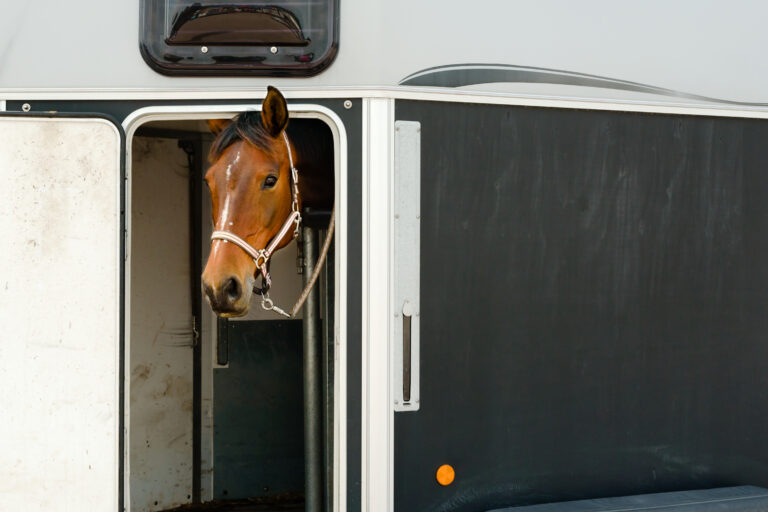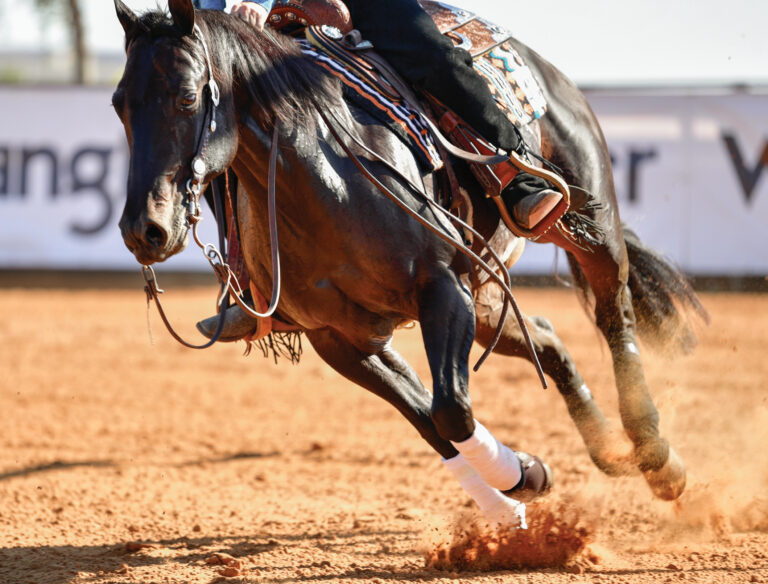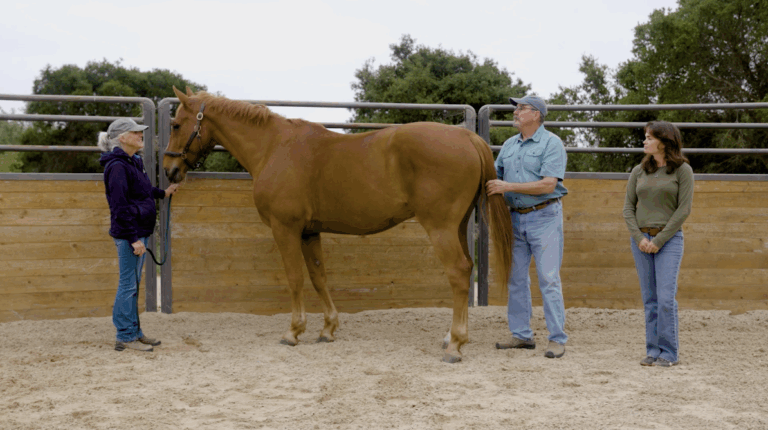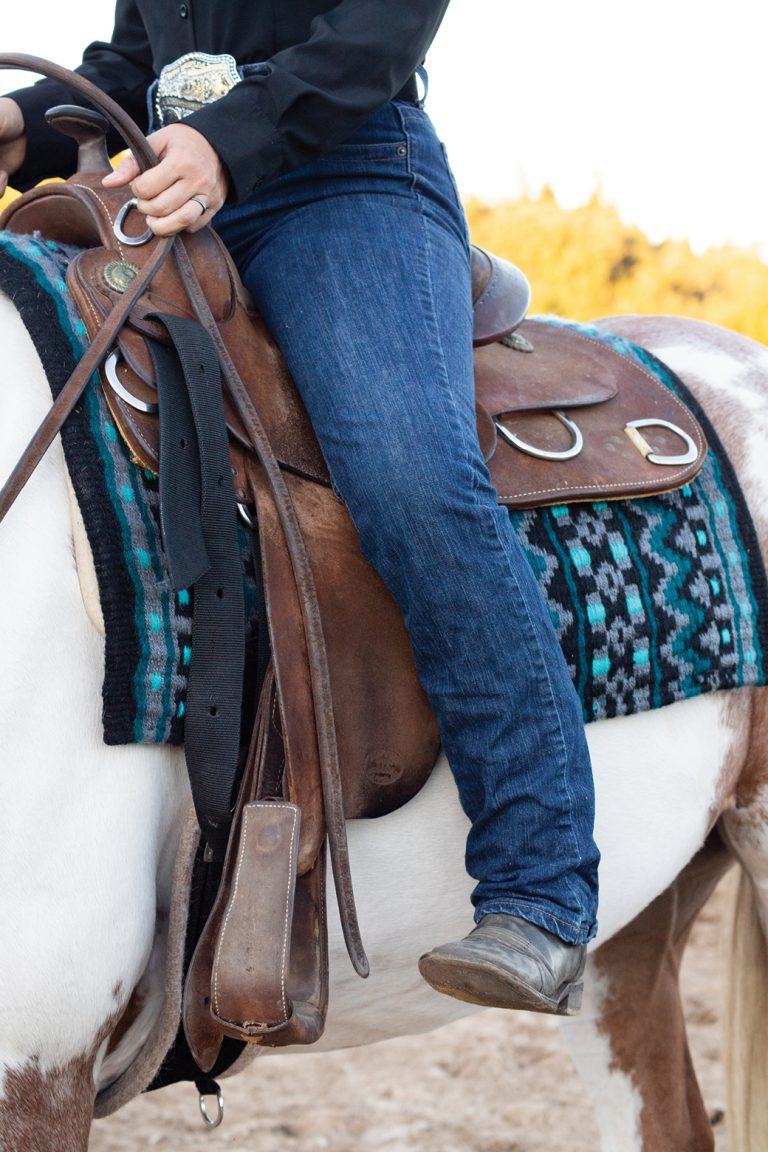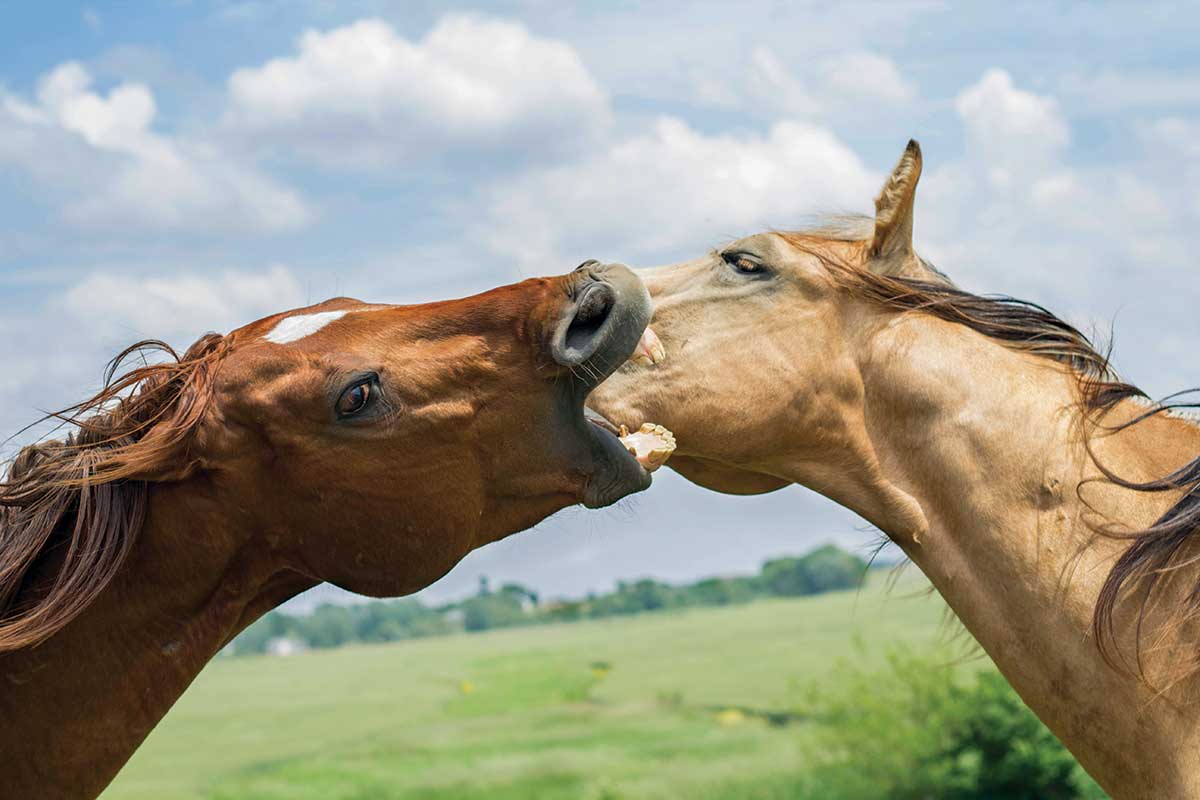
Should you play with your horse? Some owners think it’s fun and believe they should do it to improve the horse-human relationship. In reality, though, equine play behavior involving humans is likely to be more dangerous than fun. For every entertaining or insightful moment, there are a multitude of risks that in the long run just aren’t worth taking.
Horses do benefit by being occupied when they’re on their own, and in the right circumstances, opportunities to play can provide them cognitive enrichment. Moreover, offering stimulation and activities that encourage them to interact safely with humans and their environment can help develop the learning processes that improve their psychological well-being and welfare.
But teaching your horse something that can turn into a dangerous behavior doesn’t fall into this beneficial category. A dangerous horse is a threat to you and others. And, if you ever need to sell or rehome a horse that knows potentially dangerous play behavior, he can wind up doing serious harm to his new owners.
I’ll explain how and why horses play with each other. I’ll also tell why horse-human play based on certain behaviors can be risky, plus describe play that’s safe and beneficial.
ENCOURAGING SELF PLAY
Many horses spend hours confined in stalls or otherwise isolated from other horses. Equine play toys, either homemade or purchased, can enrich a stabled horse’s life and help him avoid boredom.
With any toys or play activities, make sure your horse doesn’t become frustrated with a challenge that’s too difficult for him. If necessary, make the challenge easier or choose a different game or toy.
Also, regularly change out the items you leave with your horse to make sure he doesn’t get bored with the same toy or activity.
Here are a few play strategies to consider.
• Provide a toy chest. Load a sturdy bucket or crate with a few horse-safe toys (no sharp points or edges, or ingestible parts). Large dog toys, rubber balls with rings designed for horses, and balls that release horse treats when rolled work well. You can scatter grass, vegetables, or high-fiber treats in the bottom of the container, and pour diluted apple or carrot juice on top of all of it. Monitor your horse’s behavior and when he becomes bored, remove the box.
• Pack hay in a traffic cone. Use the same hay your horse is accustomed to, allowing some to poke out the ends of the cone. Hide extra treats inside. Other items can also be used as treat dispensers; for example, hide treats in towels or staple-free cardboard boxes.
• Make vegetable kebobs. Thread root vegetables (such as carrots, beets, parsnips) onto a strong cord or rope; hang it from your horse’s stall ceiling or tree branches outdoors.
Natural Forms of Play
Horses play with each other for various reasons, some directly related to survival in the wild. Play keeps horses physically fit, which in turn enables them to outrun predators. Play also helps them practice skills they need to thrive in the wild. Mock fights, for example, prepare them to fend off potential rivals or predators, while chasing games may help them to learn and practice escape strategies.
Play behavior has social aspects, too. Play contributes to social cohesion by improving the bonds between individuals in a herd. It helps develop horses’ social skills with each other, similar to the way kids learn to interact with other youngsters on a playground. This is true for horses of any age, but foals, especially, learn how to be adults through the behavior we see as play.
Here are a few of the types of play that horses naturally engage in with each other.
Nip and shove. This involves two horses biting and pushing each other. These mock fights help males practice how to challenge other males, plus defend against such challenges.
Chase and charge. One horse signals a desire to play by cantering off across the field. Another chases the first, then the whole group joins in. This improves horses’ physical fitness and allows them to practice escape skills.
Play mounting/sexual play. Colts begin this sort of play by attempting to mount their mothers, then move on to their peers. This is practice for when they come of breeding age.
Object play. A horse plays alone with an object such as a ball or branch. Through this sort of play, a horse learns about his environment and whether things are safe or not. (Some horses will play like this excessively; this can happen when they’re kept alone with nothing to do, or if they
haven’t had the opportunity to socialize with other horses.)
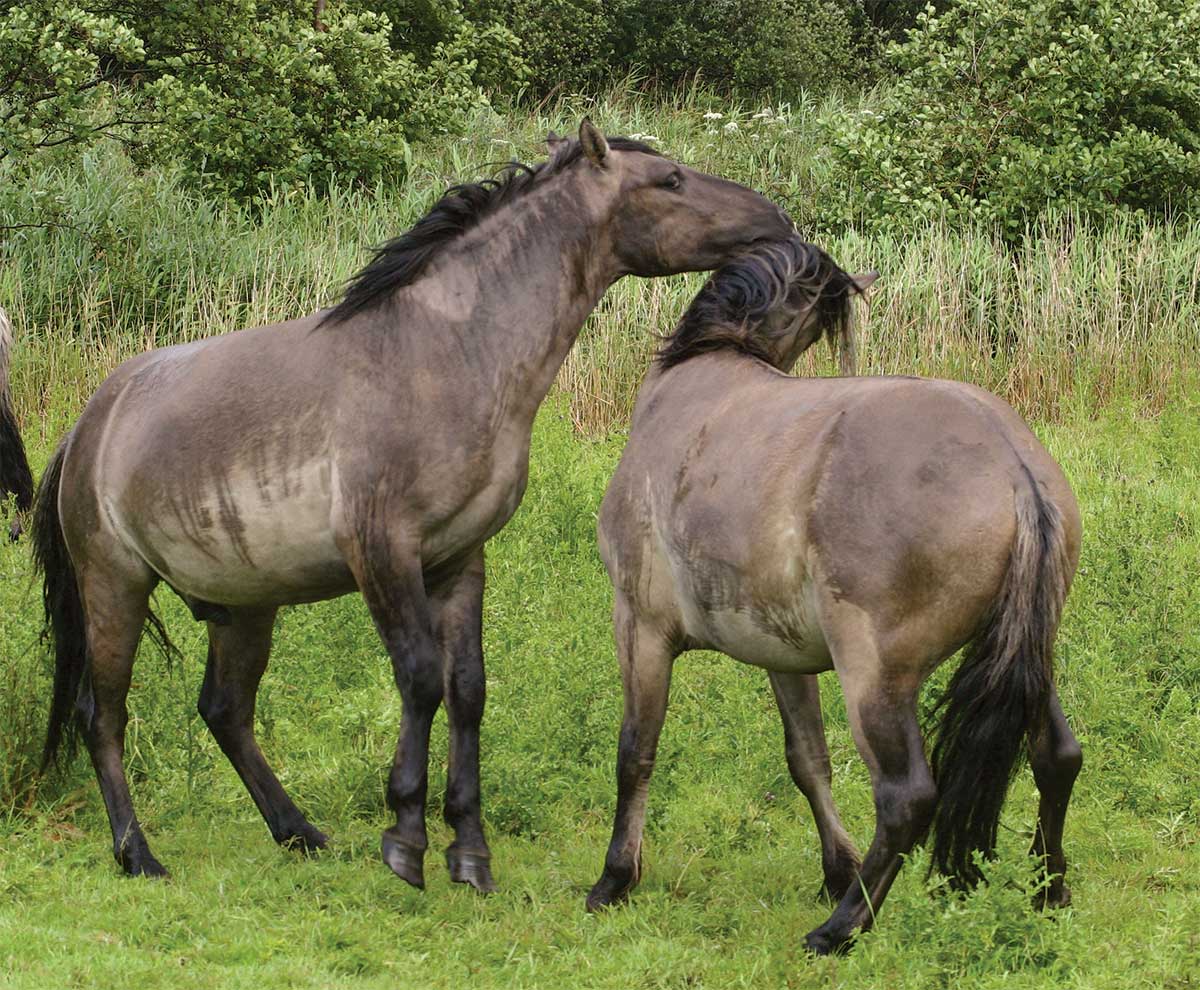
Games You Shouldn’t Play
That’s how horses play with each other, but what if yours tries to play with you? For your own safety, even if you’re an experienced horse person, you shouldn’t engage in most of the types of play that we see horses perform with each other, no matter how innocent or charming it may seem. And there are many other play behaviors you should avoid, as well.
Here are examples of common behaviors people perform with horses that may seem fun, but are extremely risky and can lead to a dangerous, ill-mannered horse.
Playing chase in a field or arena. While it seems fun, this type of play hardly makes sense. Chasing your horse—an animal of prey—can cause him to be afraid of you or feel threatened by you. The goal is for your horses to trust and feel safe with you, so this game could quickly damage your relationship. Moreover, getting into close quarters with a horse you’re running with can easily earn you a savage kick.
PLAY GROWS BRAINSPlay among horses (and all mammals) is absolutely beneficial to them—in fact, it’s critical for normal development. Research in children has shown that those who played often were quicker to learn than those who did not, and that some areas of their brains involved in learning actually increased in size. It’s interesting to note, too, that although younger horses tend to play more than adults, adult horses do play, as well.
Teaching to rear or strike out. Practicing any behavior obviously means that behavior happens more often—and possibly not when you want it! A horse that rears when ridden can lose his balance if you move; the resulting fall could injure both you and your horse. A horse that strikes out may do this with strangers or with you unexpectedly, potentially causing life-threatening harm.
Feeding treats from your own mouth or teaching your horse to kiss you. How does a horse know he’s supposed to be gentle with you, when biting a pasture-mate is fair and good fun? Moreover, if a horse is hungry, he may lunge at food or become frustrated if you move away or withhold the treat when he doesn’t “play” the way you want him to—and a frustrated horse may well bite unexpectedly.
Playing physically with foals. Some horse owners can’t resist imitating nip-and-shove games with their foals, or even teaching them to sit on their laps. While this may seem innocent when foals are small, once they grow to be adults this behavior can obviously be extremely dangerous. Don’t do it!

How You Can Safely Join In
In general, your goal is to encourage calm, quiet activities, always putting safety first. While you want to avoid all risky play behavior, the one category of natural play in which you can safely participate is object play.
You can, for example, teach your horse to find treats under a bucket, or set him up to bob for apples. Games like these that mimic natural foraging behaviors are safe and fulfill your horse’s innate drive to search for food.
Apart from any interactions with you, make sure your horse has—if possible—plenty of regular “horse time” where he’s turned out to play naturally with his peers. And if that kind of turnout isn’t possible, at least provide opportunities for your horse to entertain himself when he’s on his own (see “Encouraging Self Play,”).
Justine Harrison is a UK-based equine behaviorist and trainer. Certified with the International Society of Animal Behaviour Consultants and accredited with the Animal Behaviour & Training Council, she uses the latest science to help horse owners and trainers solve behavior problems, including separation anxiety, aggression, and phobias (equinebehaviourist.co.uk).

